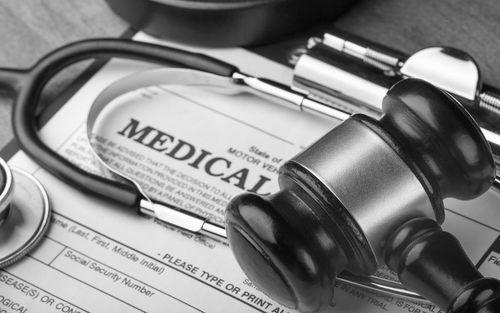If you are bringing a medical malpractice lawsuit in North Dakota, you are limited to the amount of “noneconomic damages” that you can recover under the North Dakota statute. N.D.C.C. § 32-42-02 provides that a plaintiff in a medical malpractice action is limited to recovering $500,000 for noneconomic damages, regardless of the number of healthcare providers or other defendants and regardless of the number of claims brought in the lawsuit. This statute further provides that a jury may not be informed of the limitation on damages, and the court will reduce the award of damages by a jury to comply with the limitation.
Noneconomic Damages vs. Economic Damages
Under North Dakota law, noneconomic damages are damages arising from pain, suffering, inconvenience, physical impairment, disfigurement, mental anguish, emotional distress, fear of injury, loss or illness, loss of society and companionship, loss of consortium, injury to reputation, humiliation, and other non-pecuniary damage.
Noneconomic damages are different than economic damages, which under North Dakota law are damages arising from medical expenses and medical care, rehabilitation services, custodial care, loss of earnings and earning capacity, loss of income or support, burial costs, cost of substitute domestic services, loss of employment or business or employment opportunities and other monetary losses.
Condon v. St. Alexius Medical Center
On April 22, 2019, the North Dakota Supreme Court came out with a new opinion regarding the constitutionality of the noneconomic damages cap in medical malpractice cases. In Condon v. St. Alexius Medical Center, a patient sued her doctor and the hospital for medical malpractice, and the case was tried before a jury. The jury returned a verdict finding the defendants negligent, and they awarded the patient $265,000 in past economic loss, $1.735 million in future economic loss, $150,000 in past noneconomic loss, and $1.350 million in a future noneconomic loss. The doctor sought a reduction of noneconomic damages under N.D.C.C. § 32-42-02 and sought additional reductions on other grounds. The patient opposed the reductions and challenged the constitutionality of N.D.C.C. § 32-42-02. The district court found N.D.C.C. § 32-42-02 unconstitutional on equal-protection grounds. The doctor appealed to the North Dakota Supreme Court, arguing the district court erred in holding N.D.C.C. § 32-42-02 to be unconstitutional.
On appeal, the Court discussed a prior appeal in 1978, where the North Dakota Supreme Court held that a total damage cap of $300,000 in medical malpractice actions violated equal protection. The Court distinguished this case from the 1978 case, explaining that the new statute’s limits are only on noneconomic damages, not a total damage cap limiting the plaintiff’s economic and noneconomic damages. The Court stated, “Here, the damage cap is not nearly as drastic.” The Court believed that N.D.C.C. § 32-42-02 “does not prevent seriously injured individuals from being fully compensated for any amount of medical care of lost wages. Instead, injured individuals are prevented from receiving more abstract damages in excess of $500,000.” The North Dakota Supreme Court concluded that the damage cap in N.D.C.C. § 32-42-02 did not violate the equal-protection provisions in the North Dakota Constitution Article I, § 21, and it remanded the case to the district court for a reduction in noneconomic damages consistent with N.D.C.C. § 32-42-02.
What Does This Mean?
Unfortunately, this means that plaintiffs can still, at maximum, only recover $500,000 for noneconomic damages in medical malpractice actions. However, plaintiffs can still recover an unlimited amount for past and future economic damages in medical malpractice cases.
Conclusion
If you have been injured and are looking to consult with an attorney, please give the Personal Injury Team a call at 701-297-2890 or send us an email via the contact form below. All consultations are free of charge, and any case for personal injury is on a contingency fee basis only, meaning we only recover fees if we are able to get you compensation for your harms and losses.
The information contained in this article and on this website is for informational purposes only and not for the purpose of providing legal advice. Each personal injury case is different, and this article only summarizes very technical laws. You should contact an attorney to obtain advice with respect to your particular case.




